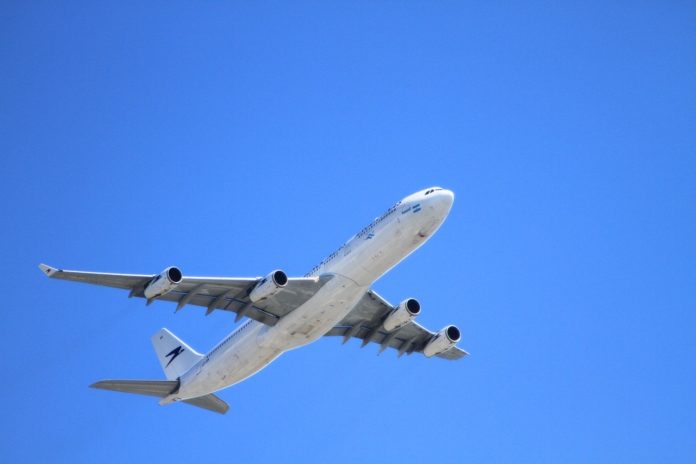Which would you rather purchase: a flight to the island of Nevis for $322.99, or a flight to the island of Bequia for $310.99 plus an additional $14 carbon fee?
According to a recent study from the University of British Columbia, consumers are generally in favour of implementing carbon pricing on air travel — but the key lies in how you frame it.
The study was led by David Hardisty, an assistant professor in the Marketing and Behavioural Sciences Division of UBC’s Sauder School of Business, and the results were published in the Journal of Environmental Psychology.
Would a carbon price by another name seem sweeter?
Carbon pricing typically refers to fees that must be paid on products or industries that result in carbon pollution. The goal is to incentivize businesses and consumers to choose cleaner options, and therefore reduce carbon emissions in the future.
But there are a number of ways a carbon price can be implemented. For example, an “upstream” pricing regulation is one that is applied to the extraction of fossil fuels, whereas a “downstream” pricing regulation is applied to the usage of products or services.
From a conventional economics standpoint, the two are essentially equivalent. In the example of a flight, the extra cost is either paid by the airline company when it purchases fuel and then added onto the cost of a ticket, or it is paid by the passenger as an extra cost tacked on to the ticket price. In either case, however, the final cost of the ticket ends up being roughly the same.
The names companies use to describe these pricing regulations can also differ. For example, some companies choose to frame this as a “tax”, where others instead refer to it as an “offset”.
Consumers don’t typically see that this carbon fee has been included in their ticket price — instead, airlines will simply present a total cost when advertising a ticket. But would pointing out that this fee is a part of what customers are paying for, and changing the language surrounding the fee itself, have an effect on how consumers respond to flight prices?
To determine whether or not this was the case, Hardisty and his team surveyed a large group of US-based participants about their opinions on various flight options. While the cost of each flight offered was roughly the same, the language used to describe each price differed. The flights were framed as either an “upstream offset”, an “upstream tax”, a “downstream offset”, a “downstream tax”, a flight for which no extra information was provided, or a flight for which it was made clear that no extra fees were added.
After carrying out the survey, they found that participants responded significantly more favourably to the upstream offset description as opposed to other pricing methods. This option was also favoured over slightly cheaper flights with no carbon fees built into the cost, suggesting that consumers are generally in favour of carbon pricing regulations.
Although Canadian airlines currently aren’t allowed to separate the taxes from the total cost of a flight when advertising fares, the results of Hardisty’s study suggest that consumers may react favourably to a more transparent breakdown of carbon fees.
“[The] upstream offset frame was popular enough among consumers that it counteracted the expected preference to avoid the $14.00 additional cost of the fee,” the authors explained.
The results suggest that a more prominent breakdown of airline fees early in the booking process may result in increased consumer support and awareness around carbon pricing regulations.
Who is responsible for carbon emissions?
To determine why consumers favoured the upstream offset model, the team carried out a second survey. The goal was to determine participants’ views on both the environmental impact of each option, as well as which option best ensured that those responsible for carbon emissions are actually being held accountable.
In this survey, participants were asked to read near-identical descriptions of carbon pricing policies labelled as either an “upstream offset”, a “downstream offset”, or an “upstream tax”. They were then asked questions about whether they would support such an initiative, whether they feel it will have an impact on climate change, and whether they feel it holds those responsible for carbon emission pollutions accountable.
They found that the upstream offset model inspired significantly greater pro-environmental flight preferences than other models. And while there was not a significant difference between either upstream model when it came to the question of who is responsible for carbon emissions, consumers did feel that either upstream model better places the fees in the hands of those responsible than a downstream model.
“The upstream offset policy is uniquely perceived to address both the causes and consequences of carbon emissions,” the authors explained, “which in turn predicts consumer preference and policy support.”
In the future, Hardisty and his team are interested in exploring how upstream/downstream models of pricing are perceived in other contexts — for example, products that include charitable donations. He suspects that a downstream model might be more favoured in this case, but adds that this should be tested in future research.








































